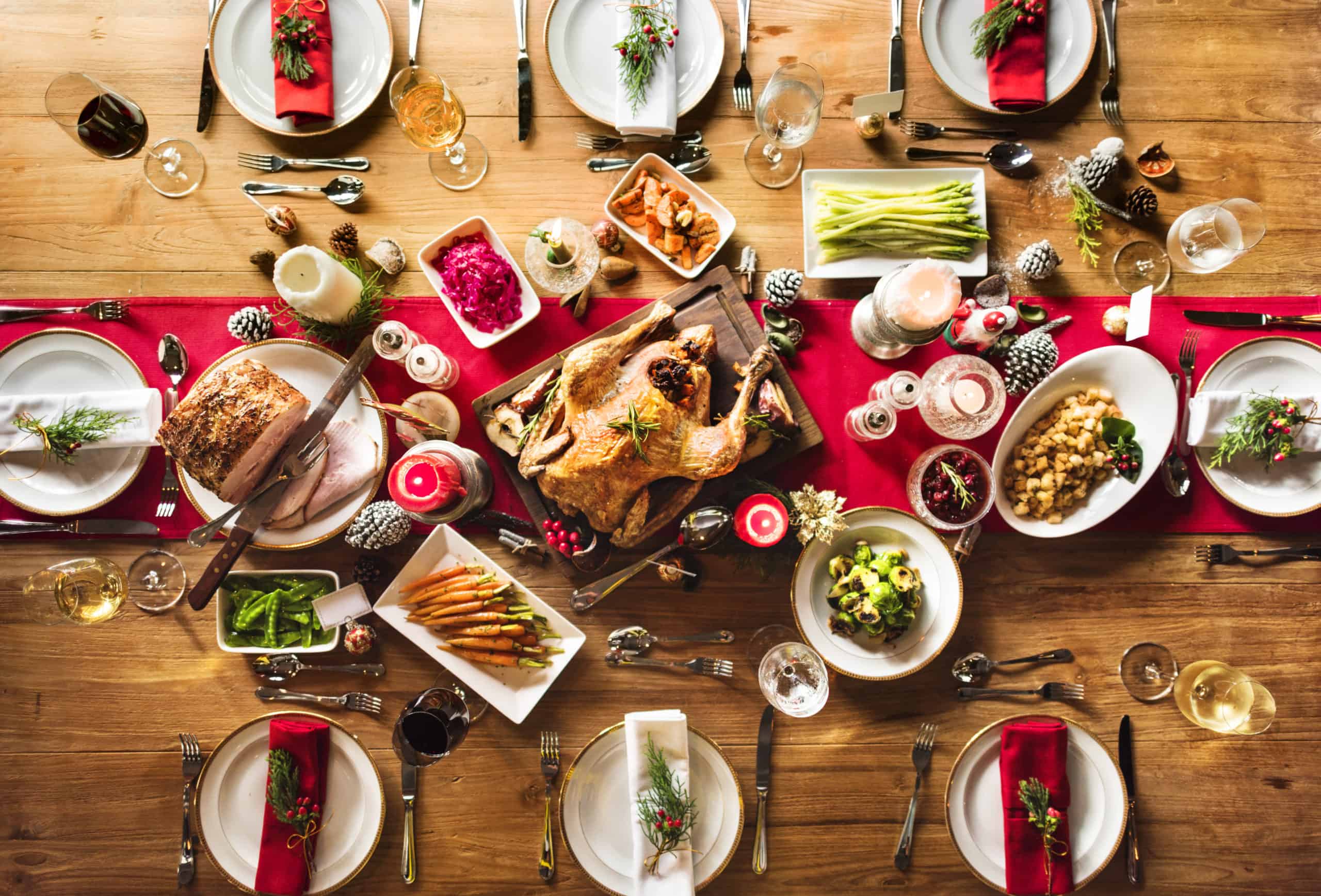The holiday season is often felt to be the happiest time of the year and it’s full of festive lighting displays, small family gatherings and delicious food. For many of us, the holidays are great but they are not always great for our diets and overall health. The holidays bring about those tasty desserts, big family dinners and sugary drinks that can send our diet off the deep end and leave us working extra hard in the weeks that follow. In this week’s Health Journal, we discuss how to keep your holiday season a little healthier and how there is an abundance of options to make it happen.
Eating tips:
- Eat close to your usual times: This will allow you to stay in your normal eating routine and lessen the desire to want to splurge on foods throughout the day. Eating close to your normal time also allows you to keep your blood sugar steady and on track. If you are preparing to have a meal at a later time than normal, eat a small snack during your normal mealtime and eat a little less when it is finally served.
- Don’t skip: We have all probably skipped a meal in anticipation for a larger meal at a later point in the day, but this is something that can lead to some negative consequences. Skipping a meal to save up for a feast makes it more difficult to manage our blood sugar while also making it more likely for us to overeat when we finally reach our meal.
- Don’t let it spiral: We are familiar with how missing a day at the gym can lead to missing two days, to missing three days and so on. This also applies to the way we eat. If you have a family gathering the night before and overeat, that’s fine, but it’s important to not let it spiral and turn that bad meal into two or three bad meals. Make sure to get back on track as soon as possible.
- Take 10 before seconds: Seeing a big spread of food and desserts can leave us feeling extra hungry, but leaving a little time before getting seconds might help with those cravings. It takes a few minutes for that “I’m full” signal to get to our brain, so it’s recommended to take a 10-minute break after your first serving to ensure your body has enough time to digest what you have taken in. A small break allows you to reassess your appetite and you might even realize you are full or at a minimum take a smaller portion of seconds.
- Keep your distance: At a family gathering this may be difficult since the food seems to be everywhere around us. However, it is recommended that you don’t stand next to the food table since it will make it more difficult for you not to recreationally eat as you are conversing with your friends and family. If you know you are prone to recreational eating, maybe try having a mint or chewing gum to deter you from grabbing that enticing bag of chips.
- Watch the empty tank: This goes back to what we talked about earlier and not allowing yourself to skip meals in favor of a bigger meal later on. When attending a holiday gathering, try eating something before you go out to ensure you don’t arrive to the party completely famished. Some great pre-party snacks include things like apple slices and peanut butter or a slice of turkey and cheese on whole-wheat pita bread.
- Make room for veggies: While pies, cookies and large servings of protein sound great, it’s important to fit in those veggies. They can be included as a snack along with those other options or even included as a side dish. The versatility of vegetables always makes them a great party option as well.
- Cook from the heart: We all have family favorite recipes and things we look forward to all year, but there are some ways small choices can make a big difference. Keeping the recipe intact is still possible but being creative by using less butter, cream, lard, or other ingredients rich in saturated fats, can make a meal just a little healthier.
Drinks:
- Drink to your health: We often think about the food we are eating and the calories it entails, but what we drink often goes unnoticed. For example, a glass of eggnog can you set you back up to 500 calories; wine, beer and mixed drinks can range between 150 & 225 calories. While it’s perfectly fine to have an adult beverage or too, it’s important to remember to include these calories when monitoring your diet.
- Avoid alcohol on an empty stomach: Alcohol and an empty stomach are usually a bad combination. When it comes to your diet specifically, drinking on an empty stomach increases your appetite and diminishes your ability to control what you are eating. So, the next time you are ready to have a few drinks, remember to eat some food or a small snack ahead of time to go along with it.
- Use low-calorie mixers: Depending on your preference, drink mixers can add plenty of additional calories to your drink and diet. There are low-calorie alternatives however, like choosing no-calorie soda or tonic water to help reduce these added calories.
Now whether it’s the food we eat or the drinks we drink, the holidays bring about a lot of temptations in addition to great times. But as you can see above, there are a few tips and tricks to help you out the next time you visit a family gathering, from not skipping meals to avoiding alcohol on an empty stomach. We hope these tips and tricks will help make your holidays just a little more diet friendly.
Sources:
https://www.cdc.gov/diabetes/healthy-eating/5-healthy-eating-tips-holidays.html
https://www.health.harvard.edu/blog/12-tips-for-holiday-eating-201212245718
https://newsnetwork.mayoclinic.org/discussion/10-healthy-holiday-nutrition-tips/
